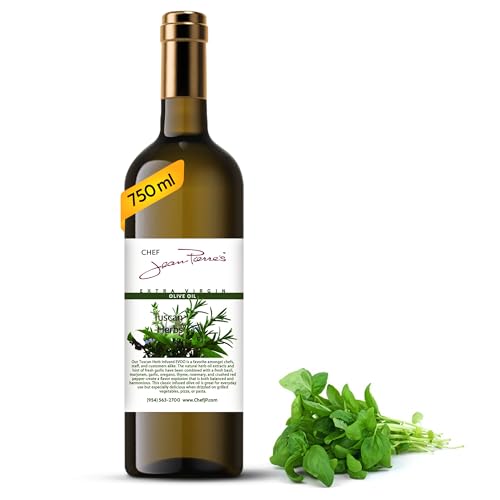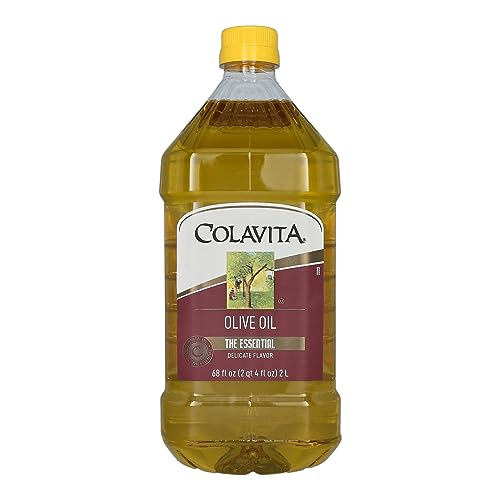The Best Real Olive Oil, Buying Guide
Finding the best real olive oil is harder than it should be. Many bottles on the shelf aren’t as pure or authentic as they claim to be.
Real olive oil should be fresh, cold-pressed, and free from blends or additives—qualities that impact both taste and health benefits.
Want to know how to spot the real thing and which brands consistently deliver? Stick around—we’re cutting through the noise to help you choose with confidence.
Compare Products
- KR Score9.6
Kitchensradar.com established a ranking system called KR Score. KR Score is unaffected or unrelated to any websites run by manufacturers or sales agents. Learn more
- BrandPompeian
- KR Score9.6
Kitchensradar.com established a ranking system called KR Score. KR Score is unaffected or unrelated to any websites run by manufacturers or sales agents. Learn more
- BrandPompeian
- KR Score9.6
Kitchensradar.com established a ranking system called KR Score. KR Score is unaffected or unrelated to any websites run by manufacturers or sales agents. Learn more
- BrandPompeian
- KR Score9.4
Kitchensradar.com established a ranking system called KR Score. KR Score is unaffected or unrelated to any websites run by manufacturers or sales agents. Learn more
- BrandA ATLAS OLIVE OILS
- KR Score9.4
Kitchensradar.com established a ranking system called KR Score. KR Score is unaffected or unrelated to any websites run by manufacturers or sales agents. Learn more
- BrandAmazon Fresh
- KR Score9.4
Kitchensradar.com established a ranking system called KR Score. KR Score is unaffected or unrelated to any websites run by manufacturers or sales agents. Learn more
- BrandAmazon Fresh
- KR Score9.4
Kitchensradar.com established a ranking system called KR Score. KR Score is unaffected or unrelated to any websites run by manufacturers or sales agents. Learn more
- BrandPompeian
- KR Score9.4
Kitchensradar.com established a ranking system called KR Score. KR Score is unaffected or unrelated to any websites run by manufacturers or sales agents. Learn more
- BrandAmazon Fresh
- KR Score9.2
Kitchensradar.com established a ranking system called KR Score. KR Score is unaffected or unrelated to any websites run by manufacturers or sales agents. Learn more
- BrandEllora Farms
- KR Score9.0
Kitchensradar.com established a ranking system called KR Score. KR Score is unaffected or unrelated to any websites run by manufacturers or sales agents. Learn more
- BrandLa Española
Last update on 2025-08-04 / Affiliate links / Images, Product Titles, and Product Highlights from Amazon Product Advertising API
Neither Greek nor Italian olive oil is universally better—both countries produce exceptional extra virgin olive oils, but the differences lie in flavor profile, olive variety, and regional practices.
-
Greek olive oil is known for its smooth, fruity, and slightly grassy flavor, often from Koroneiki olives. It's typically milder and well-suited for everyday use, including raw applications like salads or bread dipping.
-
Italian olive oil (especially from Tuscany or Liguria) tends to be more robust, peppery, and complex, often with strong herbal or artichoke notes. It's ideal for bold dishes or finishing oils.
In terms of quality, both countries adhere to strict standards. Authenticity, freshness, and certification matter more than national origin. Choose based on your flavor preference and intended use, not just the country.
What is the best authentic olive oil from Italy?
Some of the best authentic Italian olive oils come from PDO-certified regions and are made with traditional, traceable methods. Top examples include:
-
Toscano IGP or DOP (Tuscany): Bold, green, and peppery oils made from Frantoio, Moraiolo, or Leccino olives.
-
Ligurian Taggiasca oil: Mild and buttery, excellent for fish and vegetables.
-
Sicilian oils: Rich and fruity, made from olives like Nocellara del Belice or Biancolilla.
-
Umbrian oils: Deep green with hints of spice and bitterness, often single-estate.
Look for bottles labeled with:
-
“Extra Virgin”
-
“Cold-pressed” or “First Cold Extraction”
-
PDO/PGI/IGP certification
-
Harvest date (not just best-by date)
Brands like Frantoia, Frescobaldi Laudemio, and Castello di Ama are examples of reputable Italian producers, but smaller estate-bottled oils are often the most distinctive.
Why is Greek olive oil so expensive now?
Greek olive oil prices have surged due to a combination of economic and environmental factors:
-
Climate conditions: Severe drought, heatwaves, and unpredictable weather have reduced olive yields across Greece.
-
Olive fly infestations: Poor weather management and pest issues have further damaged harvests.
-
Global demand: As more consumers seek out high-quality EVOO, Greek olive oil—long valued for its smooth profile—has grown in popularity.
-
Production scale: Many Greek producers are small-scale or family-run, focusing on quality over volume, which raises costs.
-
Export dynamics: Increased demand in global markets, coupled with supply limitations, pushes up export prices.
As a result, Greek olive oil is often priced higher, particularly for premium or organic versions from regions like Crete or Kalamata.
Which is better, Spanish or Italian olive oil?
Again, “better” depends on preference and purpose, not just country. Both Spain and Italy produce world-class olive oils:
-
Spanish olive oil:
-
Spain is the world’s largest producer, offering a wide range of EVOOs.
-
Common varieties: Arbequina (mild and fruity), Picual (strong and peppery), Hojiblanca (balanced and herbal).
-
Spanish oils are often excellent value, combining quality with affordability.
-
Ideal for both cooking and finishing.
-
-
Italian olive oil:
-
Typically from smaller estates with PDO/IGP certifications.
-
Offers intense, complex flavor profiles, especially from early-harvest oils.
-
Often more expensive due to lower volume and higher production costs.
-
In summary:
-
For bold, artisanal oils with strong flavors, Italian EVOO may be better.
-
For versatile, affordable oils with fruity balance, Spanish EVOO is a strong contender.
For the best experience, focus on harvest date, certification, freshness, and flavor—not just nationality.





























